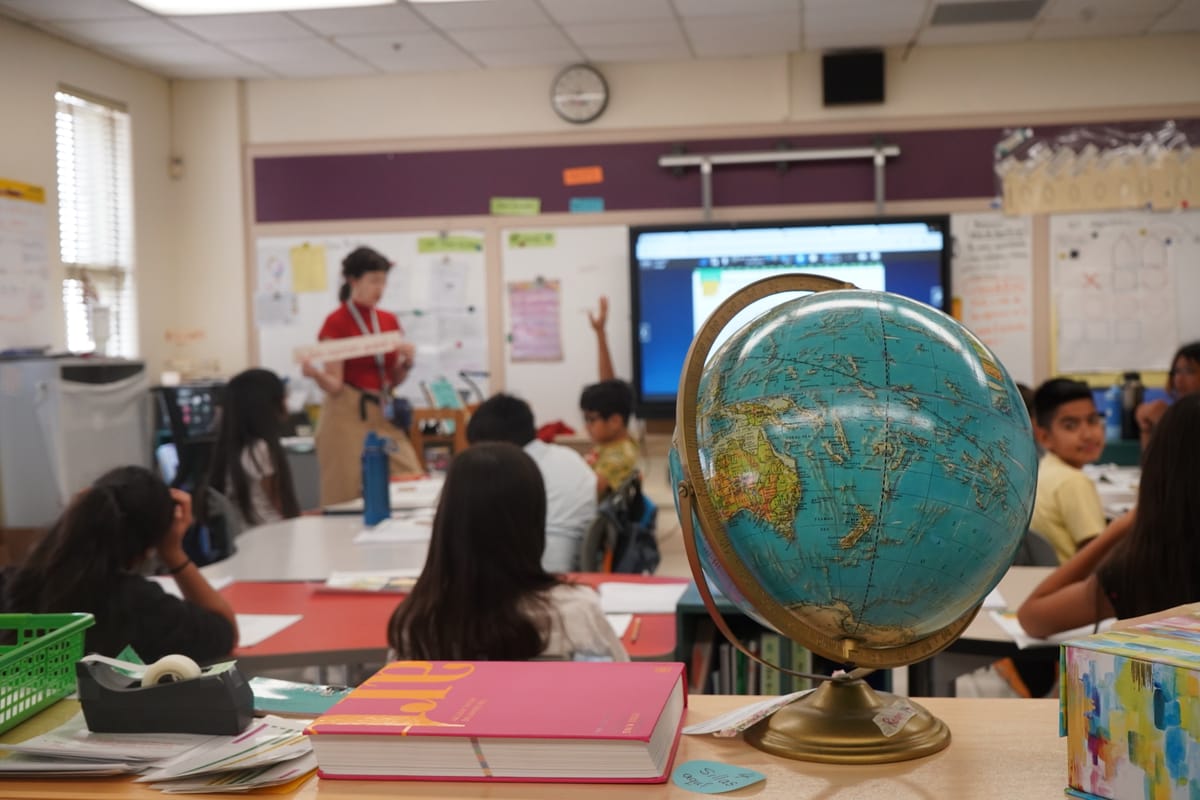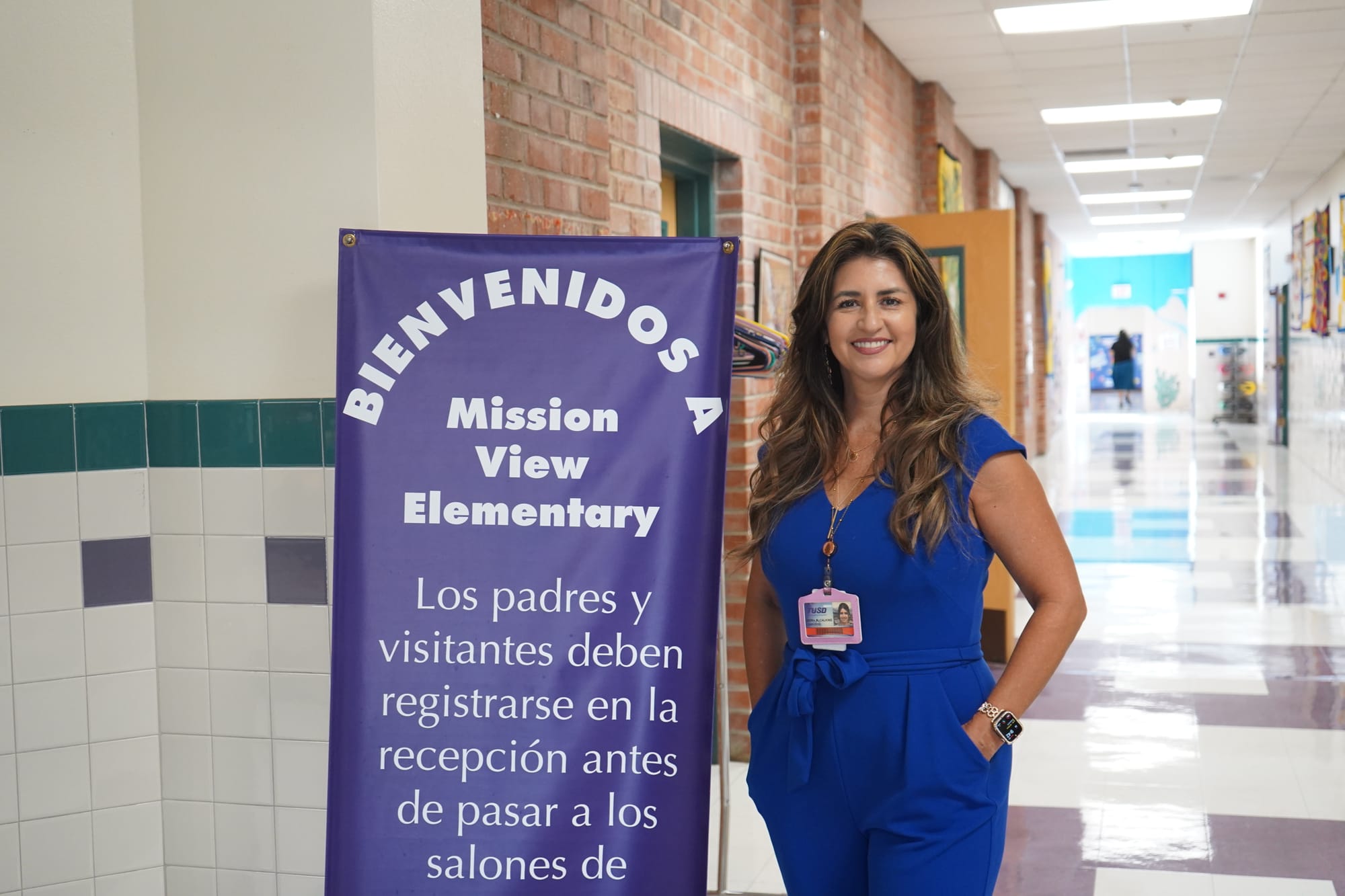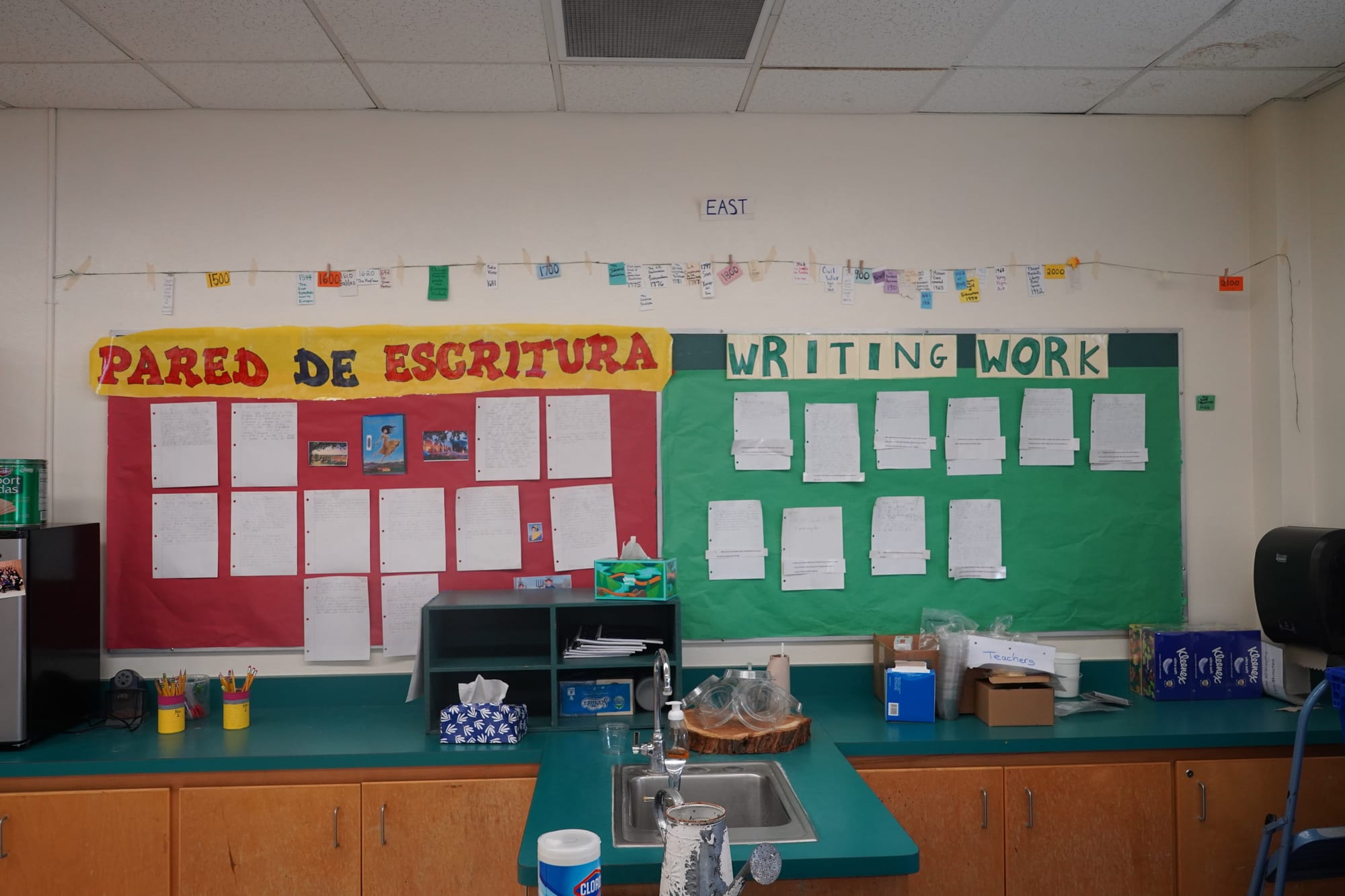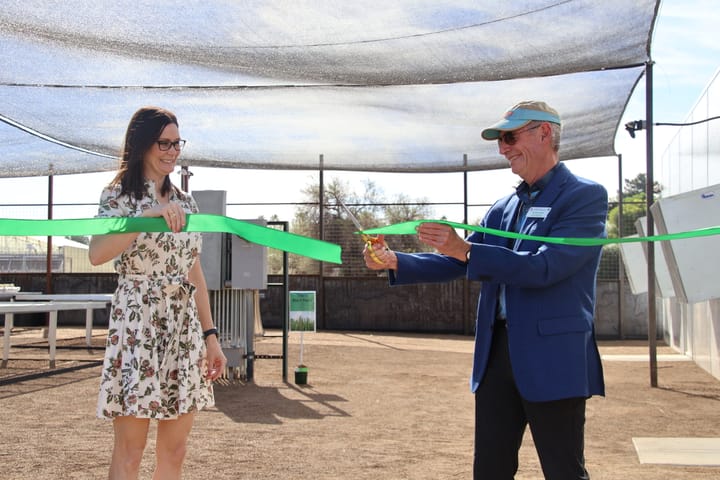TUSD dual language program builds bilingual students
Tucson Unified’s dual language program teaches students to become bilingual and biliterate, preparing them for academic success and a global workforce.

Inside Fransisca Miranda’s kindergarten classroom, the alphabet comes alive in Spanish. Some children quietly trace letters in their notebooks while, in a corner, Miranda leads a small group through phonetic drills on the letter “Y.”
“Oh, you did it with your dad?” she asks a student in Spanish before guiding the group to try again.
Around them, posters cover the walls in Spanish, and shelves hold classic children’s books in both English and Spanish.
This is Mission View Elementary, one of 12 Tucson Unified School District schools running a dual language program designed to raise bilingual and biliterate students from kindergarten through high school.
The program is one of three language programs TUSD offers from kindergarten through 12th grade. Its goal is to prepare students for a global market that values bilingualism and to help dismantle the stigma around speaking another language.
The district’s other language programs include Structured English Immersion, an English language development program for students whose second language is English, and World Languages, where students can learn a variety of languages including German, Arabic, French, American Sign Language, Pascua Yaqui, and more.
“There’s just so much brain research behind being bilingual,” Mission View Elementary School Principal Sandra Calkins told Tucson Spotlight. “Students in dual language programs outperform the English-only across the board in all of our language schools year after year (in standardized testing). It also helps to build the language so kids can acquire a second language or maintain their primary language.”
Spanish is the second most commonly spoken language in the United States, and in Arizona, one in five residents speak it, according to the U.S. Census.
When students enter a traditional English-only school, they speak Spanish less, Calkins said, using it only at home, and some lose the language altogether.

At Mission View, students graduate proficient in speaking, reading, and writing in both English and Spanish.
“We’re preparing students for a global economy. To be able to communicate in two languages is a huge asset when it comes to being employable,” said Anna Manzano, the district’s dual language program coordinator. “Our kiddos are not just coming with that second language where they learn to speak it at home, but now they’re getting the opportunity to not only speak it but at high academic levels.”
Mission View, located in South Tucson, was one of the first dual language programs in the district. To date, it has successfully implemented the immersion model.
In kindergarten, children begin with 90% of their instruction in Spanish and 10% in English. The balance gradually shifts each year until, by fifth grade, instruction is evenly split between the two languages. By that time, students are bilingual and biliterate.
“I think it gives them a lot of self-confidence, especially when they have family members that they may not have been able to converse with in the past who are Spanish-speaking only,” Calkins said. “But also pride in their culture, in their language.”
She added that language is especially important now, when some people feel afraid to speak it or hide that part of their identity for fear of being targeted under a strongly anti-immigrant administration.
The Spanish language has been rooted in Tucson for centuries. Once Mexico’s northernmost outpost, the city’s history and culture remain deeply intertwined with it.
Arizona is the only U.S. state with an English-only policy in its public schools, making it challenging to keep other languages alive. Under Proposition 203, formally titled “English Language Education for Children in Public Schools,” all instruction must be conducted in English, and students who are not fluent in English are placed in intensive English immersion programs.

According to the American Immigration Council, it stems from assimilationist pressures on marginalized communities, including the forced assimilation of Native American and Hispanic children.
“Historically in TUSD, we've always had bilingual education in one shape or form,” Manzano said. “There was a time when we had programs in every single one of our schools, but after Prop 203 in 2000, it pretty much dismantled most of our programs, and we were left with ten programs.”
Research shows that the English-only model hinders children’s learning, while dual language programs provide significant academic benefits.
“Not only do they catch up to their mainstream peers, but they surpass their mainstream peers,” Manzano said. “We've seen that in our data as a district, too, just how well our students in these programs are performing.”
Calkins says state law poses one of the biggest challenges, as students who already speak Spanish must achieve English proficiency before fully participating in the program. Balancing both languages while preparing for English-only standardized tests limits the program’s effectiveness.
Still, Calkins is a strong advocate. For her, it’s personal: she was punished for speaking Spanish as a child and didn’t teach it to her own children until she recognized the clear benefits of being bilingual.
“There’s actually a whole generation of parents right now that are not bilingual because their parents were, but then they didn't pass that on because they wanted them to do well in school… the parents themselves are not bilingual, and they really want that for their kids,” Calkins said. “We're trying to help bring (Spanish) back and make sure that people see it again as an asset and not something to overcome and forget, but to build upon.”
Other challenges facing bilingual schools include funding and keeping and maintaining highly skilled dual language teachers, who need additional certification to be bilingual teachers.
“There’s always a concern because as we stand, in education all the funding is always so limited, and so we further chip away at something that is already not funded adequately,” Manzano said.
Arizona is already facing a teaching shortage, with State Superintendent Tom Horne recently calling it an “emergency.” According to the fall 2024 Arizona School Personnel Administrators Association report, a quarter of teacher vacancies remain unfilled across the state, while 52% of vacancies are filled by teachers who do not meet the state’s standard certification requirements.
Despite the challenges, TUSD’s Dual Language Program continues to forge a path for a new generation of bilingual, biliterate, and culturally aware young people. Students can continue the dual language program throughout middle and high school, earn a seal of biliteracy, and graduate high school having transferable Spanish college credits.
Susan Barnett is Deputy Editor of Tucson Spotlight and a University of Arizona alum. Contact her at susan@tucsonspotlight.org.
Tucson Spotlight is a community-based newsroom that provides paid opportunities for students and rising journalists in Southern Arizona. Please consider supporting our work with a tax-deductible donation.



